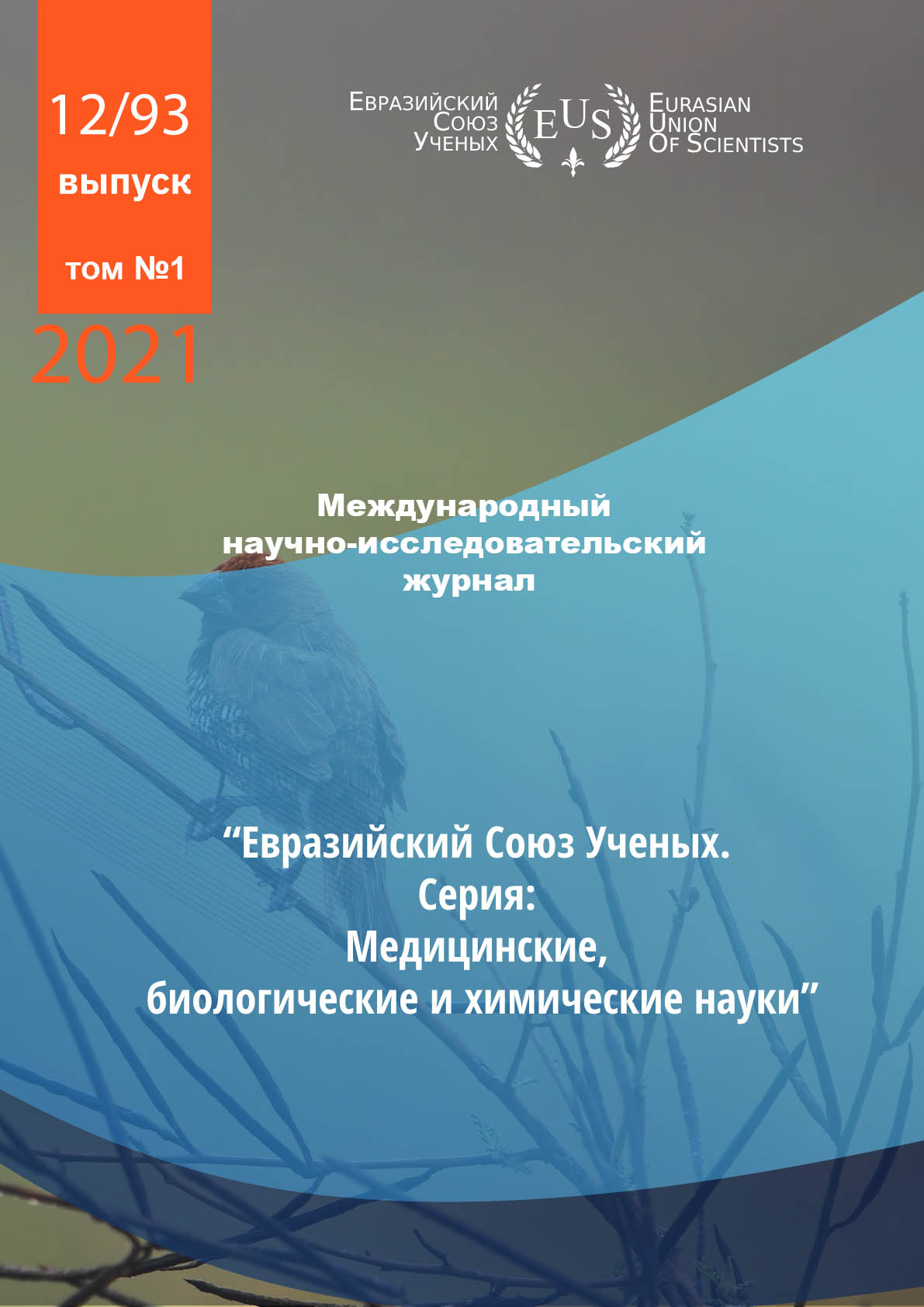CHARACTER OF INTERACTION AND GLASS FORMATION IN THE As2Se3-In2Se3 SYSTEM
Abstract
The kharacter of the interaction and glass formation in the As2Se3-In2Se3 system was investigated by the methods of physicochemical analysis (DTA, XRD, MSA, as well as by measuring the microhardness and determining the density) and the T-x phase diagram was constructed. The formation of a new compound of composition InAsSe3 in the As2Se3-In2Se3 system is established. The InAsSe3 compound is formed as a result of a peritactic reaction at 725оС. It was found that this InAsSe3 compound crystallizes in the tetragonal system with lattice parameters: a = 9.20 ± 0.02; c = 5.42 ± 0.02 Å, Z = 4, density ρpycn = 5.25.103 kg/m3, ρx-ray. = 5.86.103 kg/m3. In the As2Se3-In2Se3 system, solid solutions based on As2Se3 at room temperature reach 2 mol % In2Se3, and based on In2Se3-3 mol. % As2Sе3. It was found that in the As2Sе3-In2Se3 system upon slow cooling based on As2Se3, the glass formation region reaches 7 mol. % In2Se3, and in the mode of quenching in ice water up to 13 mol. % In2Se3.
References
2. Dinesh Chandra SATI1, Rajendra KUMAR, Ram Mohan MEHRA // Turk J Phys, 2006. V. 30. P.519.
4. Seema Kandpal R.P.S.Kushwaha // Indian Academy of Sciences. PRAM ANA journal of physics 2007. V.69. № 3. P. 481.
5. Kolomiec B.T., Ryvkin S.M. // ZhTF . 1974.T. № 19. C.2041.
6. Churbanov M.F., Shirjaev V.S., Pushkin A.A., Gerasimenko V.V., Suchkov A.I. i dr. // Neorgan. materialy. 2007. T.43. № 4. S.501.
7. Churbanov M.F., Shirjaev V.S., Suchkov A.I., Pushkin A.A., Gerasimenko V.V. i dr. // Neorgan. materialy. 2007. T.43. № 4. S.505.
8. Moon J.A. and Schaafsma D.T. // Fiber and Integrated Optics, 2000 V.19. P. 201.
9. Slusher R.E., Lenz G., Hodelin J., Sanghera J., Shaw L.B., and Aggarwal I.D. // J. Opt. Soc. Am. 2004. B. 21. S 1146.
10. Jackson S.D. and Anzueto-Sánchez G. // Appl. Phys. Lett., 2006. V.88 P.221106.
11. Fu L.B., Fuerbach A., Littler I.C.M., and Eggleton B.J. // Appl. Phys. Lett. 2006. V.88. 081116.
12. Fu L.B., Rochette M., Ta'eed V., Moss D., and Eggleton B.J. // Opt. Express. 2005. V. 13. P. 7637.
13. Pudo D., Mägi E.C., and Eggleton B.J. Opt. Express 2006. V.14. P. 3763-3766.
14. Aliev I. I., Dzhafarova G. Z., Mamedova A. Z., Veliev Dzh. A. //Zhurn.neorgan. himii. 2015. T.60. № 2. S. 282. DOI: 10.7868/S0044457X15020026
15. Kim B.Y., Blake J.N., Engan H.E. and Shaw H.J. // Opt. Lett. 1986. V.11. P. 389.
16. Lee S.S., Kim H.S., Hwang I.K. and Yun S.H. //Electron. Lett. 2003. V.39. P. 1309.
17. Engan H.E. // IEEE Ultrasonics Symposium 2000. V.1. P. 625.
18. Diez A., Birks T.A., Reeves W.H., Mangan B.J., and Russell P.St. // J. Optics Lett. 2000. V. 25. P. 1499.
19. Aliev I.I., Rustamov P.G., Maksudova T.F.,Aliev F.G. // Zhurn. neorgan. himii.1987. T.32. № 8. S. 1991.
20. Aliev I.I., Gurshumov A.P., Aliev O.M. , Kuliev B.B. // Sbornik «Novye neorganicheskie materialy». Baku. 1992. 151 s.
21. Aliev I.I., Babanly K.N., Agamirzoeva G.M., Asadova S.Ju. // Mezhdunarodnyj nauchnoissledovatel'skij zhurnal uspehi sovremennoj nauki i obrazovanija. 2016. № 7. T. 2. S. 15-19.
22. Aliev I.I., Ismailova S. Sh., Ahmedova Dzh.A., Mehtieva S.T. Fazovoe ravnovesie i stekloobrazovanija v sisteme As2Se3-SuCr2Te4 // Evrazijskij Sojuz Uchenyh 2020. №2(71). Chast' 3. S.47-50.
23. Aliev I.I. Fiziko-himicheskie osnovy poluchenija novyh materialov v sistemah hal'kogenidov mysh'jaka s halkogenidami kadmija , indija i tallija. -Dis. na soiskanie doktora him.nauk. Baku. 1992. (INFH). 380 s.
24. Hvorestanko A.S. Hal'kogenidy mysh'jaka. Obzor iz serii "Fizicheskie i himicheskie svojstva tverdogo tela". - M., 1972.-92 s.
25. Chernov A.P. -Dis. kand. him. nauk. M.: IONH AN SSSR, 1970. 130 s.
26. Fedorov P.I., Mohosoev M.V., Alekseev F.P. Himija gallija, indija i tallija. Izd. ,,Nauka” Sibirskoe otdelenie. Novosibirsk. 1977. 222 s.
CC BY-ND
A work licensed in this way allows the following:
1. The freedom to use and perform the work: The licensee must be allowed to make any use, private or public, of the work.
2. The freedom to study the work and apply the information: The licensee must be allowed to examine the work and to use the knowledge gained from the work in any way. The license may not, for example, restrict "reverse engineering."
2. The freedom to redistribute copies: Copies may be sold, swapped or given away for free, in the same form as the original.







